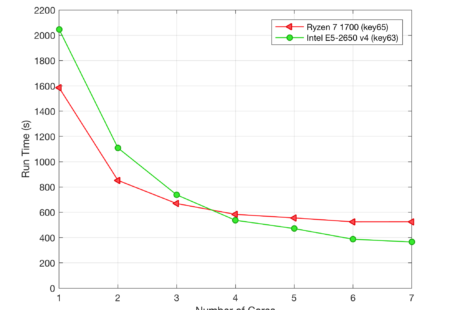I just posted a couple of videos over on my company’s YouTube channel of a pair of multi-physics simulations that we were testing for a client. I really like these posts as too often you just see the final results of the simulations with a (near) perfect result. In this case, I’ve also posted one of the earlier videos as an example of when things go wrong.
In this case, we were particularly interested in capillary draw of a relatively small tube in a larger body of water. So surface tension, contact angles in addition to the normal two-phase air/water simulations – a classical multi-physics problem. The client I was working with wanted to use CFD-ACE+.
Now, the two videos. The first attempt is where we naïvely pushed the same surface tension settings across the entire computational domain. As you can see the flow goes a bit off in the larger domain.
The key, in hindsight, is obvious that there are significant scale effects within the surface tension module that is deployed with CFD-ACE+ between the capillary and the free field. For this simulation the key interest point was the capillary draw and we are not interested in what happens in the larger reservoir. Therefore, we had two fixes:
- Turn off contact angle evaluation in the reservoir
- Increase the capillary-wave damping slightly in the tube
As you can see the results are much improved and we are now very close to the theoretical value of the draw height. Pretty good really for a rough mesh in two-dimensions to really simulate a three-dimensional problem.
Finally, thanks for reading this article and please leave a comment below. If you are interested in being updated when similar items are posted then either subscribe via RSS or sign up to my mailing list below.
